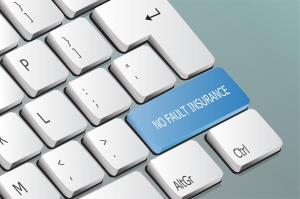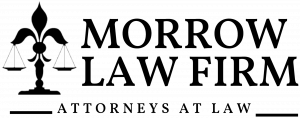
Navigating Louisiana’s Tort Insurance System: What Drivers Need to Know
Overview of No-Fault Insurance
Louisiana operates under a traditional tort system rather than a no-fault insurance system. In a tort system, determining fault is crucial because the at-fault party’s insurance is responsible for compensating the injured party. This contrasts with no-fault insurance states, where each party’s insurance covers their own injuries regardless of fault.
However, Louisiana’s insurance laws still include provisions and requirements that drivers should understand to effectively manage accident claims. The state mandates that all drivers carry liability insurance, which covers bodily injury and property damage to others when the policyholder is at fault in an accident.
Mandatory Liability Insurance Coverage
In Louisiana, drivers must carry minimum liability insurance coverage, which includes:
Bodily Injury Liability: $15,000 per person and $30,000 per accident.
Property Damage Liability: $25,000 per accident.
These minimum coverage amounts ensure that at-fault drivers can cover the costs associated with injuries and damages resulting from an accident. However, it is often advisable to carry higher coverage limits to protect against more significant financial liabilities.
Determining Fault in Louisiana
Since Louisiana follows a tort system, determining fault is a critical component of the accident claim process. After an accident, insurance companies conduct investigations to establish which party is at fault. This process typically involves:
Reviewing Police Reports: Law enforcement officers create detailed reports that include their observations and assessments of the accident scene.
Collecting Witness Statements: Witnesses provide accounts of the accident, which can help clarify the events leading up to the collision.
Examining Evidence: Photographs, video footage, and physical evidence from the accident scene are analyzed to determine fault.
William P. Morrow explains, "The process of determining fault is essential in Louisiana’s tort system because it directly affects the compensation process. Accurate determination of fault ensures that the responsible party is held accountable for the damages."
Filing a Claim in Louisiana
In the event of an accident, the injured party can file a claim with the at-fault driver’s insurance company. This claim typically covers:
Medical Expenses: Costs associated with treating injuries sustained in the accident.
Property Damage: Repairs or replacement of damaged vehicles and other property.
Lost Wages: Compensation for income lost due to the inability to work after the accident.
Pain and Suffering: Non-economic damages for physical pain and emotional distress caused by the accident.
To file a successful claim, it is crucial to gather comprehensive documentation, including medical records, repair estimates, and evidence of lost wages. Promptly reporting the accident to the insurance company and cooperating with their investigation can expedite the claims process.
Comparative Fault in Louisiana
Louisiana follows a comparative fault rule, which means that fault can be shared among multiple parties involved in an accident. Under this rule, compensation is adjusted based on each party’s degree of fault. For example, if a driver is found to be 20% at fault for an accident, their compensation would be reduced by 20%.
Morrow highlights, "Comparative fault ensures that liability is fairly distributed among all parties involved in an accident. Understanding how this rule applies can help drivers navigate their claims more effectively."
Uninsured and Underinsured Motorist Coverage
Louisiana also requires insurance companies to offer Uninsured Motorist (UM) and Underinsured Motorist (UIM) coverage, which drivers can choose to include in their policies. UM/UIM coverage provides protection in cases where the at-fault driver either lacks sufficient insurance or has no insurance at all.
Uninsured Motorist Coverage: Protects against damages caused by drivers who do not have any insurance.
Underinsured Motorist Coverage: Provides additional coverage when the at-fault driver’s insurance is insufficient to cover all damages.
Opting for UM/UIM coverage is a prudent decision, as it offers an extra layer of financial protection and ensures that victims can receive compensation even when the at-fault driver is inadequately insured.
Steps to Take After an Accident
Following specific steps after an accident can help protect rights and facilitate the claims process:
Seek Medical Attention: Immediate medical evaluation ensures that injuries are documented and treated promptly.
Report the Accident: Notify the police and obtain a copy of the police report.
Document the Scene: Take photographs of the accident scene, vehicle damage, and any visible injuries.
Collect Information: Gather contact and insurance information from all parties involved, as well as contact details for any witnesses.
Consult with an experienced personal injury attorney.
Taking these steps helps establish a strong foundation for the subsequent claims process.
Conclusion
Navigating Louisiana’s insurance system requires a thorough understanding of its fault-based approach and the steps necessary to file a claim effectively. Determining fault, understanding comparative fault rules, and considering UM/UIM coverage are all essential components of this process. By following these guidelines and taking preventive measures, drivers can better manage the complexities of accident claims and ensure that they receive fair compensation.
William P. Morrow and the team at Morrow Law Firm are dedicated to providing expert legal support and guidance to individuals navigating the aftermath of vehicle accidents in Louisiana. For more information and assistance, contact Morrow Law Firm.
About Morrow Law Firm
Morrow Law Firm, led by William P. Morrow, John Michael Morrow, Jr., and Stephen M. Morrow, is a premier legal practice based in Louisiana. The firm focuses on personal and workplace injury cases and offers comprehensive legal services to clients facing a range of legal challenges. For more information, visit Morrow Law Firm.
Morgan Thomas
Rhino Digital, LLC
+1 504-875-5036
email us here
Visit us on social media:
Facebook
EIN Presswire does not exercise editorial control over third-party content provided, uploaded, published, or distributed by users of EIN Presswire. We are a distributor, not a publisher, of 3rd party content. Such content may contain the views, opinions, statements, offers, and other material of the respective users, suppliers, participants, or authors.



